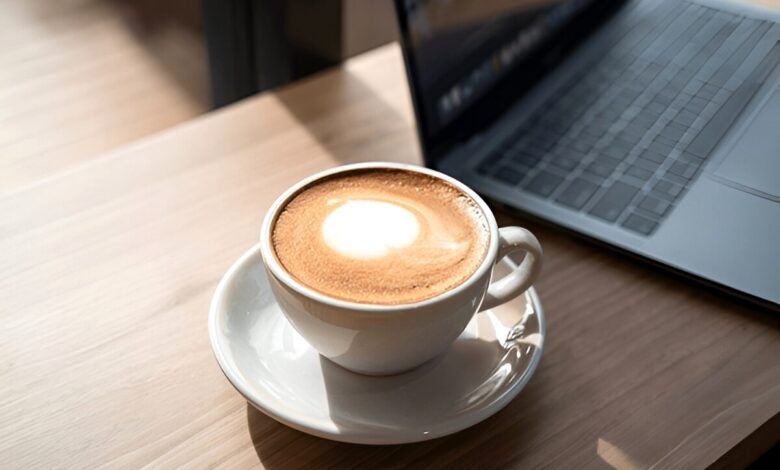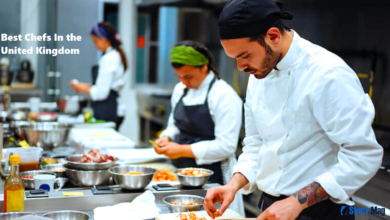The Science of Coffee: How to Brew the Perfect Cup
In this guide, we’ll explore the chemistry, physics, and techniques behind brewing the perfect coffee. Whether you're a casual drinker or a budding barista, mastering these principles will elevate your coffee experience.

Coffee is more than just a morning ritual—it’s a science. From the chemical reactions during roasting to the precise extraction of flavors during brewing, every step impacts the final taste of your cup. Understanding the Science of Coffee can help you brew a consistently delicious cup every time.
In this guide, we’ll explore the chemistry, physics, and techniques behind brewing the perfect coffee. Whether you’re a casual drinker or a budding barista, mastering these principles will elevate your coffee experience.
EXPLORE THE CONTENTS
1. The Chemistry of Coffee Beans
Understanding Coffee Bean Composition
Coffee beans are seeds from the Coffea plant, packed with complex compounds that contribute to flavor, aroma, and body. The two main species are:
- Arabica—Sweeter, more acidic, with nuanced flavors.
- Robusta—Stronger, more bitter, with higher caffeine content.
Inside each bean, you’ll find:
- Carbohydrates—Provide sweetness and body.
- Lipids (Oils) – Enhance mouthfeel and aroma.
- Acids (Chlorogenic, Citric, Malic) – Contribute brightness and complexity.
- Caffeine & Alkaloids—Influence bitterness and stimulation.
The Role of Roasting in Flavor Development
Roasting transforms green coffee beans into the aromatic brown beans we know. The Maillard reaction and caramelization break down sugars and proteins, creating hundreds of flavor compounds.
- Light Roasts—Retain more acidity and fruity notes.
- Medium Roasts—Balanced sweetness and body.
- Dark Roasts—Bold, smoky, with reduced acidity.
Understanding roast profiles helps you choose beans that match your preferred taste.
2. The Physics of Coffee Extraction
What Is Extraction?
Extraction is the process of dissolving coffee compounds into water. The science of coffee extraction depends on:
- Water Temperature (195–205°F / 90–96°C) – Too hot = over-extraction (bitter); too cold = under-extraction (sour).
- Grind Size—Fine (espresso) vs. Coarse (French press).
- Brew Time—Longer contact = more extraction.
The Ideal Extraction Yield
The Specialty Coffee Association (SCA) recommends an extraction yield of 18–22%. This means 18–22% of the coffee’s mass is dissolved into the water, creating a balanced cup.
- Under-Extracted Coffee—Sour, weak, lacking sweetness.
- Over-Extracted Coffee—Bitter, harsh, astringent.
The Importance of the Coffee-to-Water Ratio
A standard ratio is 1:16 (1 gram of coffee to 16 grams of water). Adjusting this ratio impacts strength:
- Stronger Brew—1:12 to 1:15.
- Lighter Brew—1:17 to 1:18.
Precision matters—use a digital scale for consistency.
3. The Role of Water in Brewing
Why Water Quality Matters
Water makes up 98% of your coffee, so its quality is crucial. Ideal brewing water should be:
- Filtered—Free of chlorine and impurities.
- Balanced Minerals—150 ppm hardness (calcium & magnesium enhance extraction).
- Neutral pH (~7)—Avoids altering coffee’s natural acidity.
Temperature Control for Optimal Extraction
Water that’s too hot scalds coffee, while cold water under-extracts. The Science of Coffee suggests:
- 195–205°F (90–96°C)—Optimal for most brewing methods.
- Cooler (175–185°F)—Better for delicate light roasts.
4. Grinding: The Key to Uniform Extraction
Why Grind Size Matters
Grind size determines surface area exposure, affecting extraction speed:
| Grind Size | Best For | Extraction Time |
|---|---|---|
| Extra Fine | Turkish coffee | 1–2 minutes |
| Fine | Espresso | 25–30 seconds |
| Medium | Pour-over, Drip | 2–4 minutes |
| Coarse | French Press, Cold Brew | 4+ minutes |
Burr Grinder vs. Blade Grinder
- Burr Grinder—Consistent particle size (best for even extraction).
- Blade Grinder—Uneven grind (can lead to bitter & sour notes).
Investing in a quality grinder improves your brew significantly.
5. Brewing Methods & Their Scientific Differences
A. Espresso (Pressure Extraction)
- High pressure (9 bars) forces water through finely ground coffee.
- Short Brew Time (25–30 sec) – Concentrated, rich, with crema.
B. Pour-Over (Gravity Extraction)
- Precision pouring ensures even saturation (e.g., V60, Chemex).
- Control Over Variables—Flow rate, water temperature, grind size.
C. French Press (Immersion Brewing)
- Full Immersion—Coffee steeps in water for 4+ minutes.
- Metal Filter—Retains oils, creating a fuller body.
D. Cold Brew (Time-Based Extraction)
- 12–24 Hours Steeping—Smooth, low-acid, sweet profile.
- Coarse Grind—Prevents over-extraction.
Each method extracts flavors differently—experiment to find your favorite.
6. The Art of Tasting: Understanding Coffee Flavor Profiles
The Coffee Flavor Wheel
The SCA Flavor Wheel helps identify tasting notes:
- Fruity (Berry, Citrus)
- Floral (Jasmine, Rose)
- Nutty/Chocolatey (Almond, Cocoa)
- Spicy/Woody (Cinnamon, Cedar)
How to Taste Coffee Like a Pro
- Smell—Aroma is 80% of flavor perception.
- Slurp—Aerates coffee, spreading it across your palate.
- Identify sweetness, acidity, bitterness, and aftertaste.
7. Common Brewing Mistakes & How to Fix Them
Mistake #1: Using Stale Beans
Fix: Buy freshly roasted beans; use within 3–4 weeks.
Mistake #2: Inconsistent Grind Size
Fix: Use a burr grinder for uniformity.
Mistake #3: Incorrect Water Temperature
Fix: Use a thermometer or temperature-controlled kettle.
Mistake #4: Poor Coffee-to-Water Ratio
Fix: Weigh coffee and water for precision.
Conclusion: Mastering the Science of Coffee
Brewing the perfect cup is a blend of art and science. By understanding the science of coffee—from bean chemistry to extraction physics—you can refine your technique and enjoy a consistently excellent brew.
Experiment with different beans, grind sizes, and brewing methods to discover your ideal cup. Happy brewing!
Final Tips for Coffee Lovers
✔Store beans in an airtight container away from light.
✔Clean your equipment regularly to avoid off-flavors.
✔Try single-origin beans for unique flavor profiles.
By applying these principles, you’ll not only brew better coffee but also appreciate the fascinating science of coffee behind every sip.







